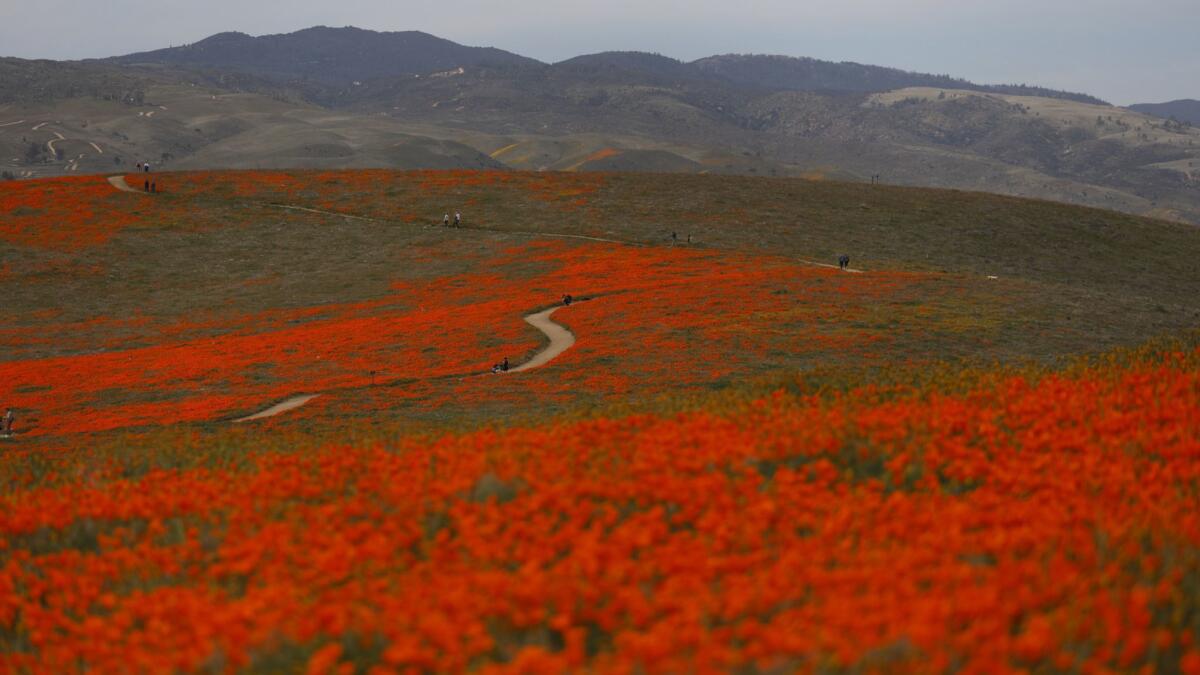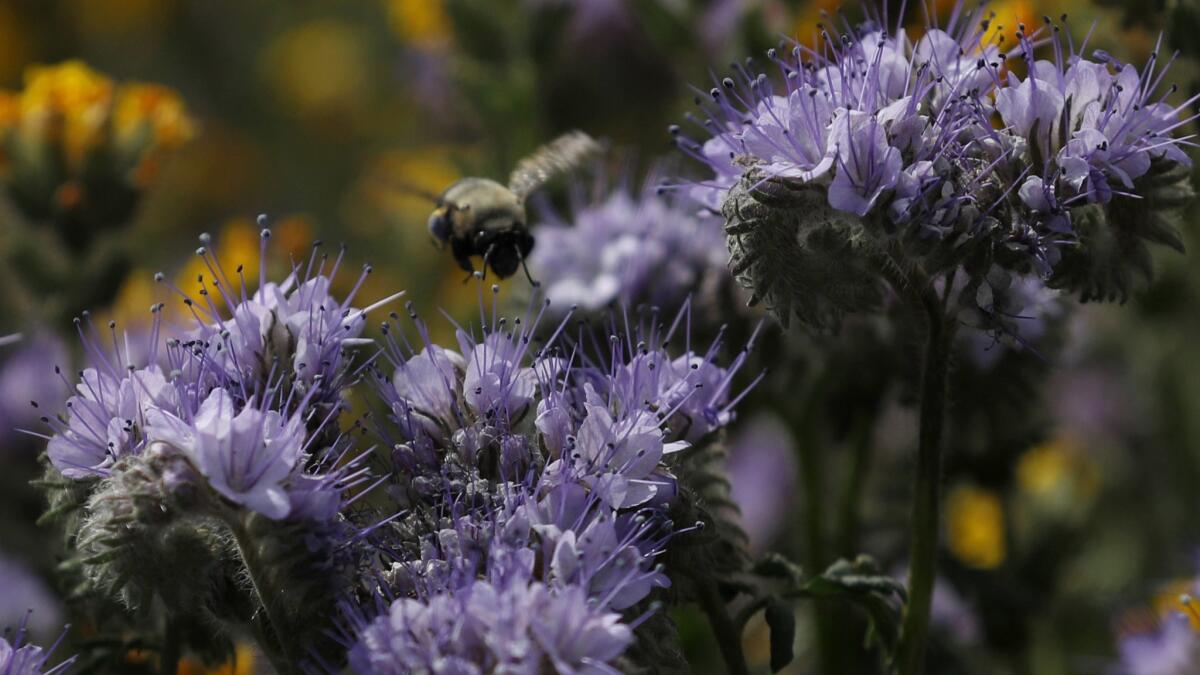Don’t pass the mustard; the golden weed’s keeping the super bloom going

Even weeds play a role in Southern California’s super bloom. Tall stands of mustard bring a wispy yellow tinge to the hillsides of the Palos Verdes Peninsula, colors you can’t miss on a drive along the coastal route. Meanwhile, Lancaster’s poppy Joshua tree blooms continue to chug on, and good wildflowers can be found in the Santa Monica Mountains.
Palos Verdes Peninsula

The most intense mustard displays can be found along Palos Verdes Drive South between West 25th Street in San Pedro and Hawthorne Boulevard. There are a few pulloffs along this narrow and often busy roadway where you can snap a photo of the mustard and the ocean.
Black mustard, or Brassica nigra, is not native to Southern California. Brought to the West Coast a few centuries ago, mustard is considered a dangerous pest plant that displaces native plants and helps wildfires spread. Just something to keep in mind as you look at the displays that turn L.A. into a Mediterranean countryside.
Santa Monica Mountains
Most trails in the Santa Monica Mountains National Recreation Area have reopened after more than 80% of the parkland burned in the devastating Woolsey fire in November. Visitors can hike in to see the comeback of the greened-up trails and wildflowers popping up.
You’ll find yellow canyon sunflowers and hummingbird sage in bloom along the one-mile Nature Trail Loop in Topanga Canyon State Park near Trippet Ranch, according to What’s Blooming. Also expect to see wild cucumber (white), arroyo lupine (purple), and Indian paintbrush (red) here and in other areas of the mountains.
Flowers sighted along the Backbone Trail in Zuma Canyon include star lily, snapdragon, coastal lotus and whispering bells. An easy way to ID your flower finds is to use the park’s Wildflowers website.
Lancaster

Tips for visiting super-bloom sites. And please, don't kill the poppies »
The reserve continues to be a hot spot for poppies — and a bunch of other plants too. The display is currently at peak and expected to last until early May. It’s not too late to get in on the blankets of orange at the desert reserve in Lancaster.

The park reports that every species of flowers at the reserve are currently in bloom. Look for patches of lacy phacelia (purple), fiddleneck (yellow), goldfields (bright yellow and low to the ground), popcorn flower (white), cream cups (off-white and low to the ground) and others.
If you want to know where to find specific species, visitor center volunteers can help guide you. The Jane S. Pinheiro Interpretive Center is open 10 a.m. to 4 p.m. weekdays and 9 a.m. to 5 p.m. on weekends through May 12.
The park, however, is open sunrise to sunset year-round. Get there early if you want to beat the crowds, especially on weekends.

Joshua trees are the stars of the desert state park about 10 minutes away from the Poppy Reserve with far less crowds. Large greenish-white clusters have been bursting for the past few weeks.
Joshua trees, by the way, are only found in the Mojave Desert, pollinated by two types of moths, and aren’t ancient (they live, on average, up to 200 years). Arthur Ripley was a farmer who donated the desert woodland tract in 1988.
Take the easy trails — the Ripley Nature Trail, which is a quarter-mile long, and the Rare Juniper Trail, which is less than a mile long — to see the blooms and explore the park. You can expect to see some wildflowers on the desert floor and desert juniper bushes.
Sign up for The Wild
We’ll help you find the best places to hike, bike and run, as well as the perfect silent spots for meditation and yoga.
You may occasionally receive promotional content from the Los Angeles Times.




